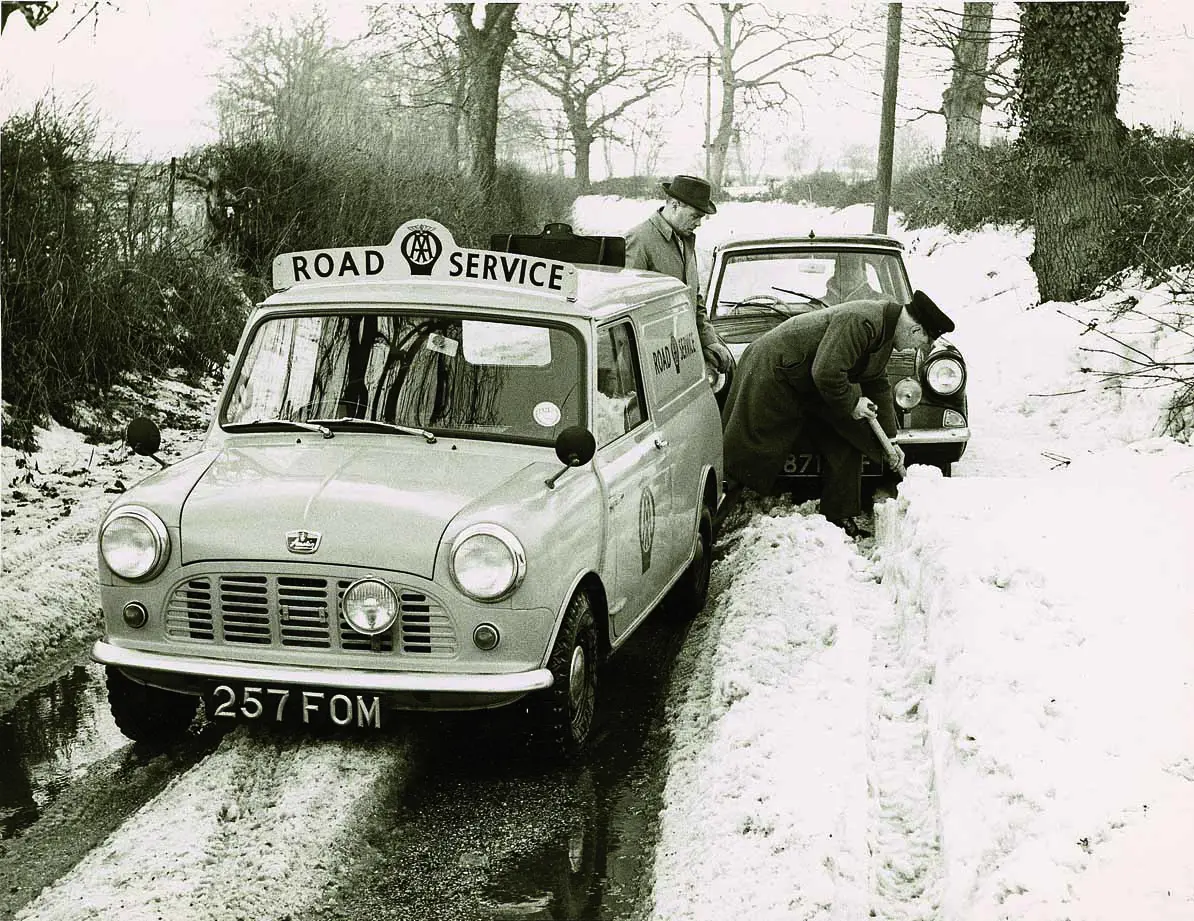THE BIG FREEZE – WINTER MOTORING OF SIXTY YEARS AGO
28 December 2022
Sixty years ago, the nation saw its lowest temperatures since 1740, with some parts of the country enduring 20-foot snowdrifts and power cuts. Some villages were cut off for days, and on Dartmoor, 6,000 animals went without food for four days until helicopters were able to drop supplies.
The Big Freeze commenced with heavy snowfalls on Boxing Day 1962, with heavy snowfall that lasted until March 1963. In Kent, the sea actually froze for up to a mile from shore, while some drivers even staged a car rally on the frozen Thames.

And it was during such times that tributes were paid to the emergency services, the AA, the RAC and the UK's lorry drivers. In many areas, water had to be delivered by tanker due to frozen mains, and countless households depended on road transport for coal, oil and paraffin. In February 1963, the BBC reported, "After five days battling, milkmen had to take the day off with exhaustion, and 15,000 London housewives went without milk."
Local authorities cancelled some 20,000 driving tests in the first week of 1963, but there were still times when experienced motorists needed to take a journey by road in the family saloon. Naturally, they would apply anti-freeze, attach snow chains to the cross-ply tyres, and regret not installing a radiator blind. They might also have to wield the starting handle in case the battery proved recalcitrant, but finally, the engine turned over. A freezing twenty-mile journey awaited.
It is important to recall that not even a new model in 1963 was guaranteed to have a heater as standard. Furthermore, despite the impact of the 1960 MOT Test, a large number of older models were still on the road. Even if you owned, for example, a Mini De Luxe fitted with this luxury, its efficiency was somewhat limited. Anyone old enough to recall BMC's recirculatory heaters will probably remember how they clanked to no particularly useful purpose.
Quite a few heating units were not especially adept at demisting the windscreen, so drivers often piloted with the front quarter lights open. In addition, as heated rear screens were the preserve of only the most expensive models, a winter journey with open rear windows was not unknown.
Meanwhile, Ford GB had only abandoned its vacuum-powered wipers in 1962. These were known to slow or even stop when travelling up a hill. Another factor to add to the pleasures of winter motoring in 1963 was that it was not uncommon for a car to still use a dynamo rather than an alternator.
So, turning on the wipers and the heater fan might cause the headlights to dim, and a complement of after-market fog and spot lamps could further drain the battery. Worse still, if you were stranded in a snow drift, how were you to summon help? Six decades ago, 'the mobile' belonged in a science-fiction film while comparatively few households had a telephone.
The thaw commenced on the 6th of March 1963.
